2024 Chevrolet Trax Activ Review: Bow Tie Bargain

Love It | Leave It |
|---|---|
Grown-up looks | No AWD |
Grown-up drive | Mediocre fuel economy |
Smart pricing | Spotty tech |
Chevrolet might not be cornering the SUV market, but it is successfully bookending it.
At the far end of the scale, the brand has long dominated the full-size, body-on-frame scene with the one-two punch of Tahoe and Suburban. (That success looks set to continue for 2025, too.) The smaller segment is tougher, a traditional stronghold for import brands.
That could change, as the 2024 Chevrolet Trax is easily the best choice in its segment. Not only does it bring to the table plenty of space, tech, and safety features, but it does so with a polished driving experience and unbeatable pricing. Nevermind the littlest SUVs: the Civic and Corolla should watch out, too.
What’s new?
The 2024 Chevrolet Trax sits on GM’s global VSS-F platform. That’s the same one underpinning the Trailblazer, the AWD-capable sibling that sits above Chevy’s latest. Except the Trailblazer is smaller, and more expensive. Wait what?
It’s true. As the SUV-ification of the market has approached saturation, Chevy figures it can attack the burgeoning sub-compact set from two angles: the more upright, rough-and-tumble Trailblazer along with the urbane Trax. The latter sticks to front-drive only, with a strut front and torsion-beam rear suspension. Every trim features the same 1.2-liter three-cylinder engine too, breathing with the help of a turbo to produce a healthy 137 horsepower and 162 pound-feet of torque. A six-speed automatic rounds out the powertrain.
It’s… handsome, right? Chevy’s squinty-face design language translates well to the stretched-out form of the Trax. The long, 106.3-inch (2,700-millimeter) wheelbase and low roof give it a definite wagon vibe, but with more ground clearance (7.3 inches / 185 mm). This is the Activ, the Trax that likes to shop at The North Face. It’s not any more off-road-capable than any other Trax, but it gets a unique front fascia and a few additional creature comforts in place of the 2RS trim’s more aggressive styling. Both trims top the lineup at the same $24,995 ($30,199 CAD) price tag, including destination. Yes, really.
Grown-up driving experience
The decision to skip AWD might turn off folks for whom winter is a half-year ordeal. (That’s what winter tires are for!) On the flip side, sticking to front-drive keeps weight (and complexity) down, and that’s important in the affordable end of the market. It also has the knock-on effect of making the Trax quite good to drive.
With a powerful turbo engine and a six-speed automatic, the Trax offers a substantially better driving experience than the Nissan Kicks or Hyundai Venue. The torquey triple puts in good work barely off idle, ensuring the Trax is able to hold its own on the highway. Every trim even includes active noise cancellation, so the cabin is reasonably isolated from the world’s din. The ride is calm and collected, with good body control over poor surfaces. Steering feedback is expectedly light, but there’s excellent consistency to its responses and weighting that feels—whisper it—not far off the Mazda3.
If there’s one trade-off, it’s the poor fuel economy. I averaged around 28.3 mpg (8.3 L/100 km) with predominantly highway driving, worse than the official combined rating of 30 mpg (7.8 L/100 km). Now that isn’t much worse than the other (less powerful) tiny-utes, but it’s a far shout from the likes of the Civic and Corolla. Curiously, the 2RS is rated the exact same, despite rolling on entirely too much tire (245/19s versus 225/18s).
Big-car cabin
That long wheelbase translates to a much more spacious cabin than buyers might expect at this price point. Seriously, there’s 38.7 inches (983 mm) of rear legroom; that’s more than you’ll find in the second row of a Traverse. The faux-leather seats are comfortable, though the lower cushions are on the short side, so the longer-legged amongst us might object. The view out from the driver’s seat is much better than that rakish roofline suggests too, with clear sight lines.
Chevrolet makes smart use of materials and colors to keep the Trax cabin from seeming—well, like it costs as little as it does. The texture on the dashboard and big, Camaro-like air vents give it some visual punch, while bits of bright work lift the otherwise plain and inoffensive door panels. Climate controls are all bundled together in the center stack. Best of all, Chevy hasn’t mucked about with the classic PRNDL layout, and keeps the two cupholders beside it.
Good (but weird) tech
Picking your Trax in LS or 1RS flavors nets a set of analog gauges with a basic display between them, and an 8.0-inch touchscreen running the ol’ reliable GM infotainment setup. Plump for any of the higher trims and in comes an 8.0-inch digital instrument cluster and 11.0-inch central screen. No matter what, you’ve got wireless Apple CarPlay and Android Auto.
The newer, Google-based system has been good to me in other Chevy products like the refreshed Silverado: quick, sharp, and still easy to navigate. Yet for our time together, the Trax just didn’t want me to have a reliable touchscreen experience. The home screen would freeze or stutter, and CarPlay kept disconnecting. At one point it reconnected—based off my Spotify playlist continuing—but the touchscreen wasn’t registering it, so there was no way to control anything. Oof.
The instrument panel is also strange. There’s no real customization done through the wheel-mounted controls; just three design themes, with increasingly useless speedometer layouts. Drivers can select a single bit of secondary info, but it needs to be done through the touchscreen.
Driver assistance tech is alright, with automated emergency braking, forward collision alert, lane keep assist and auto high beams all standard. Adaptive cruise control and blind-spot monitoring with rear cross-traffic alert are available on higher trims. One great feature I wish more automakers used: a follow distance indicator that shows the time gap between the Trax and the car in front. It’s super-simple, and a reminder to leave space, especially as the weather gets worse.
Dollars and sense
As mentioned above, this is one of two top-level Trax models; the Activ and 2RS. Both list for a matching $24,995 ($30,199 CAD); the Activ sticks to 18s and gives buyers a few more cabin niceties, while the 2RS is more about the exterior styling and its pretty 19-inch alloys. In America, that’s around $700 more than a loaded Hyundai Venue; the gap between top Kicks and Trax is less than half that. You can’t even get into a Honda Civic or Mazda3 for that price.
The $795 Driver Confidence package adds the very good adaptive cruise control and blind-spot monitoring with rear cross-traffic alert.
Canada’s a bit tougher, as the Hyundai and Nissan undercut the Chevy by about two grand, though it’s important to note the Driver Confidence package is standard on Canadian LT, 2RS, and Activ trims. It’s worth it for the extra space and driving refinement, mind you.
As-tested, with the premium paint, sunroof and wireless charger combo, and an engine block heater—but not counting dealer accessories—the Trax rings in at $27,205 ($31,884 CAD).
Verdict: 2024 Chevrolet Trax Activ Review
Weird technological hiccups aside, the 2024 Chevrolet Trax has rocketed up the rankings to become one of the very best sub-$30,000 cars you can buy. I mean that overall, too: if you’re shopping a new car and it’s anywhere around that figure, do yourself a favor and take the Trax for a spin. With more space and better driving dynamics than a lot of pricier options, Chevy’s value player is a big win.
Become an AutoGuide insider. Get the latest from the automotive world first by subscribing to our newsletter here.
2024 Chevrolet Trax Activ | |
|---|---|
Engine: | 1.2L I3 Turbo |
Outputs: | 137 hp, 162 lb-ft |
Transmission: | 6AT, FWD |
US Fuel Economy (mpg): | 28/32/30 |
CAN Fuel Economy (L/100 km): | 8.3/7.4/7.9 |
Starting Price (USD): | $21,495 (inc. dest.) |
As-Tested Price (USD): | $27,205 (inc. dest.) |
Starting Price (CAD): | $23,699 (inc. dest.) |
As-Tested Price (CAD): | $31,884 (inc. dest.) |

Kyle began his automotive obsession before he even started school, courtesy of a remote control Porsche and various LEGO sets. He later studied advertising and graphic design at Humber College, which led him to writing about cars (both real and digital). He is now a proud member of the Automobile Journalists Association of Canada (AJAC), where he was the Journalist of the Year runner-up for 2021.
More by Kyle Patrick





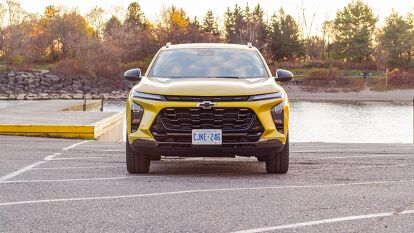



























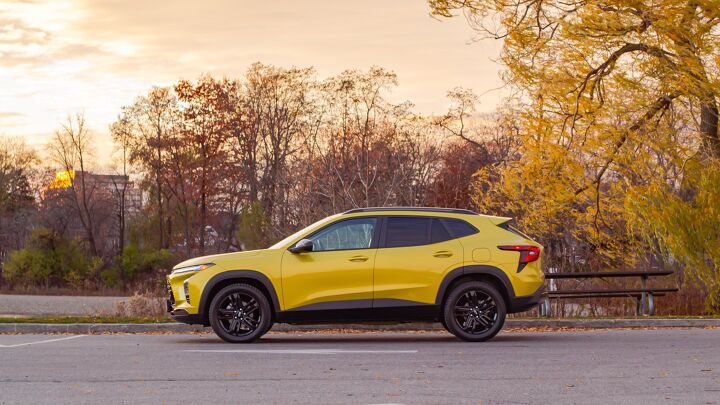




















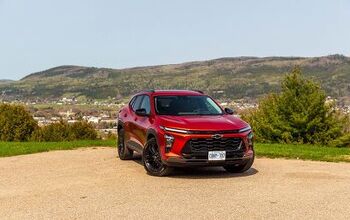






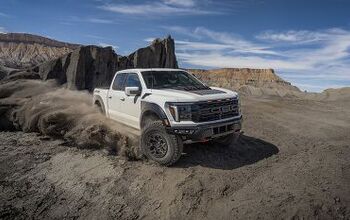

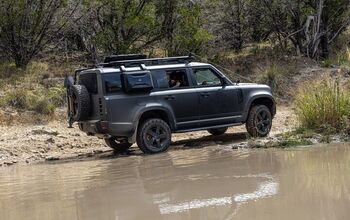


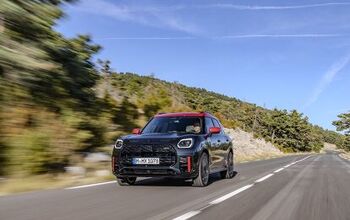

Comments
Join the conversation
Yeah, I think I'll keep my 302 HP 2016 Mercedes E350 4matic AWD that matches the Trax's 28 mpg in mostly highway driving. Even better, I bought it used with 37k on the clock for only $24,750.